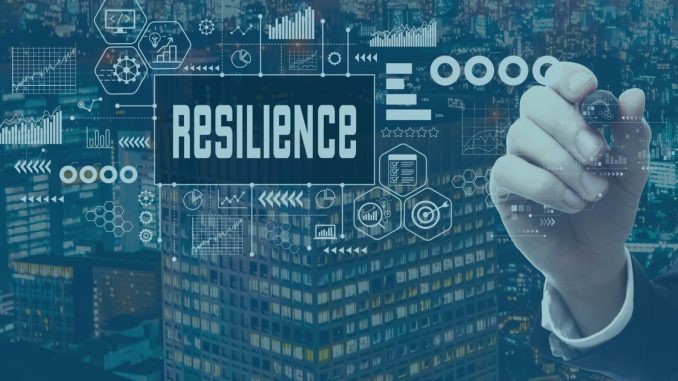
In a business world that continues to change at an astounding pace characterized by inevitable uncertainty hypothesis, adaptation is essential to success.Building resilience is about much more than just keeping one’s head above water, it’s also an opportunity to turn adversity into creativity and growth. In this article, we look at the strategic imperatives for building a business that can withstand any crisis, and move on to profit from innovation.
-
Embrace a Growth Mindset
The foundation of a growth mindset is the basis for resilient businesses. This attitude, which believes talents and intelligence can be developed through effort and perseverance, has taken root in Silicon Valley. Teams led by leaders with such a mindset see challenges as chances to learn and grow, rather than walls that block their way. By nurturing a corporate atmosphere in which learning and self-improvement are values highly prized by the firm, businesses can better respond to changes in market conditions and setbacks.
-
Diversify your Revenue Streams
For a business to rely too heavily on just one stream of income may mean that it will be unable to dodge the market’s ups and downs. Resilient businesses place special emphasis on diversification, providing new markets, products, and services in order to spread risk and capture new opportunities. This not only increases the business’s financial stability but also encourages innovation and flexibility, thus enabling it to weather setbacks and keep growing over time.
-
Create Strong Relationships
A resilient company relies on strong relationships with customers, suppliers, employees and business partners. By building relationships of trust, communication and mutual support networks, such companies ensure that when times are hard help can come from many directions. By taking the relationship with customers seriously at all times, businesses can build a network of partnerships that helps them more effectively navigate troubled times and profit from anything new that comes along.
-
Investing in Technology and Digital Transformation
Technology gives businesses the ability to streamline operations, increase flexibility and find new markets. With digital transformation, businesses can use data analytics automation and cloud computing tools such as these to raise efficiency and innovation outputs while making contributions to customer experience innovation. By keeping ahead and embracing innovation trends, businesses are better positioned to adjust to disruptions and achieve long-term success.
-
Prioritizing Agility and Flexibility
In today’s fast-changing business environment, organizations need to be flexible and agile if they are to be persistent year after year. Businesses that can pivot—quickly experiment and adapt to changing market conditions are more likely to weather shocks and seize emerging opportunities which arise. This demands a willingness to embrace change, iterate at high speed and delegate decision-making rights out to teams under a clear strategic framework.
6.Theme of Resilient Culture Inoculation
Resilience is not simply a strategy; it is something that the entire organization places at its heart. To construct a culture of resilience , this entails providing staff with empowerment and giving them access to the communication channels they need. It enables teams for success in managing challenges. And just as leaders were central to the establishment of an initial plan of operation, they also play a critical role in terms of shaping minds towards their alternate way of thought: resilience. This means constantly demonstrating agility during times of change and instilling confidence and optimism even in the face of adversity.
-
Ongoing Risk Assessment Along with Planning for Overcoming
A proactive approach to building resilience is to identify and eliminate potential risks. Businesses who assess potential risks with some regularity will develop back-up plans and parallel strategies for difficult situations. When faced with such an emergency situation, this proactive stance enables businesses to minimize the drawbacks very quickly and from the beginning. As a result, continuity is maintained and trust with stakeholders is protected.
8.Embracing Sustainable and Corporate Social Responsibility
‘Sustainability is not only about affording it but being able in its environment to endure over time and it also means gallant respectability.’ Business leaders who prioritize sustainability, ethical norms in operations, social impact and so forth not only work toward making the world better but also bolster their own vitality. By making sustainable practices a part of daily life, it is possible to not only reduce costs but also attract more socially conscious customers who have confidence in the firm and its future. In addition there has been no shortage of long-term evidence that a company’s reputation — which is tied up with these two factors, among others — can determine many things about the future direction for that corporation. Sustainable practices will better safeguard you for tomorrow than fully insured commercial policies do today.
Case Study: Creating Resilience by Innovation at Company X
Facing difficult challenges in 1989, X company, a leading technology maker of those days , had to deal with both new market conditions and changing tastes among consumers. Company X did not flinch and hide, instead treating this change as a timely chance to innovate. They launched new products that diversified the range of their own and other suppliers, expanded into fresh markets altogether and put substantial funds behind scientific research. By adopting a growth mindset, emphasizing agility, and promoting an environment of innovation, Company X not only weathered the storm but also remained strong. They are still in business today.
Conclusion
Building resilience is not a one-time project, but rather an ongoing voyage of the mind which calls for both strategic planning and personal innovation. If we embrace it D like this, companies can weather the storm. In future they will be able to develop–juts by adding a g or t here and there–new ways of thinking about life and work to match these changing times. Danny Scalabrini is Head of Marketing for China and Southeast Asia. His other responsibilities include Global Marketing Services at Biltmore Companies Limited, an international real estate developer, operator and manager headquartered in Hong Kong.